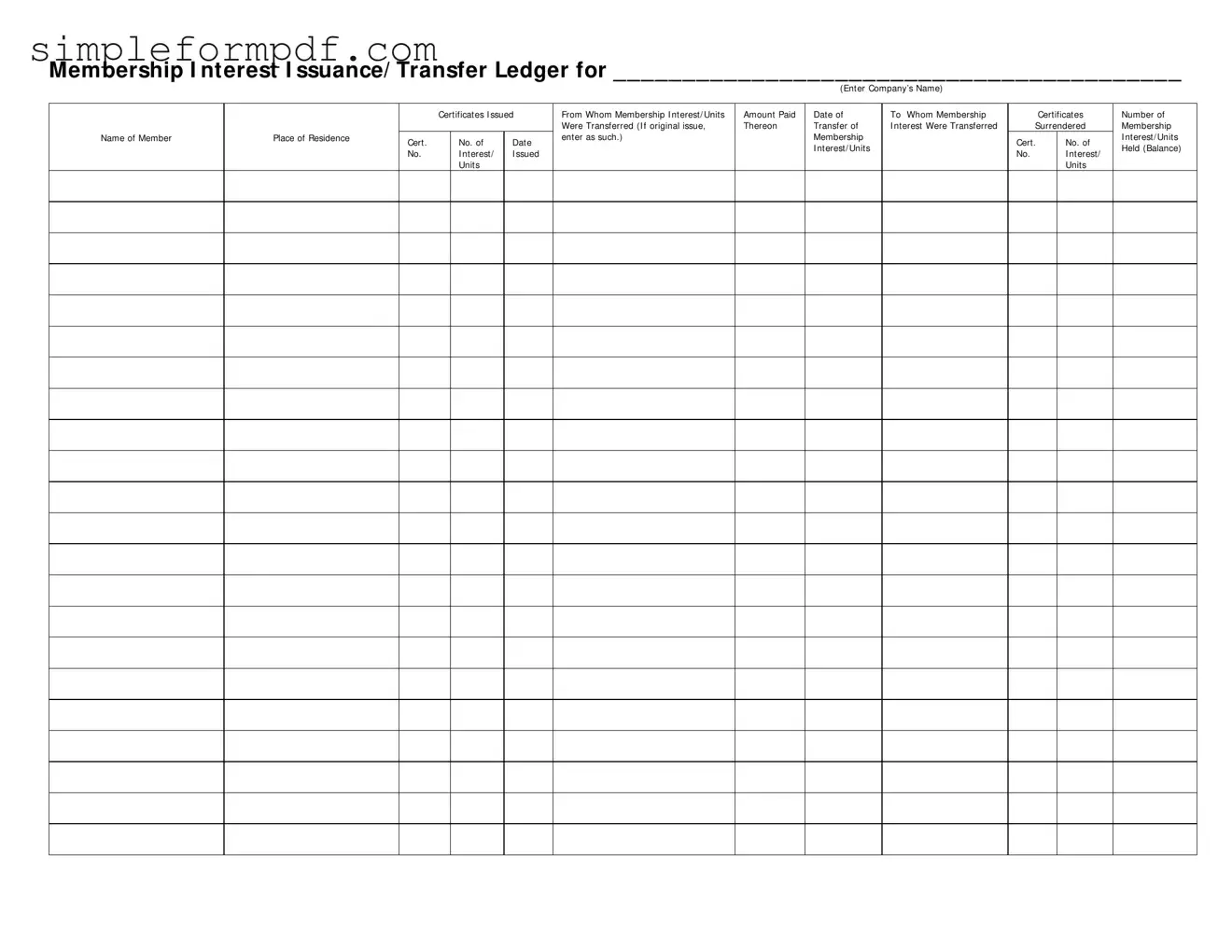Membership Ledger PDF Form
The Membership Ledger form serves as a detailed record for tracking the issuance and transfer of membership interests within a company. This form captures essential information, including the names of members, the amount paid for interests, and the dates of transfers. For accurate record-keeping and transparency, it is vital to fill out this form correctly; please click the button below to get started.
Launch Editor

